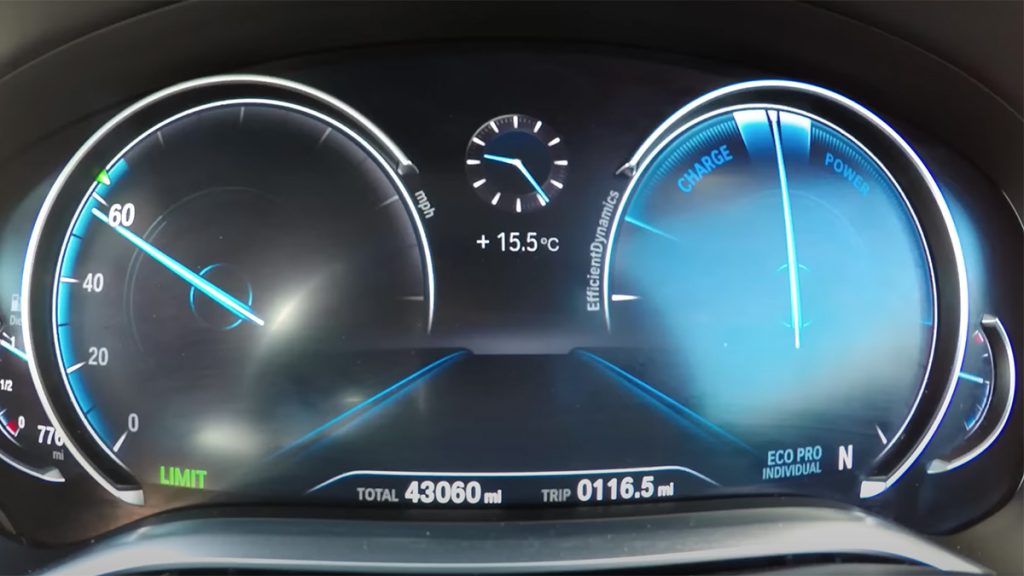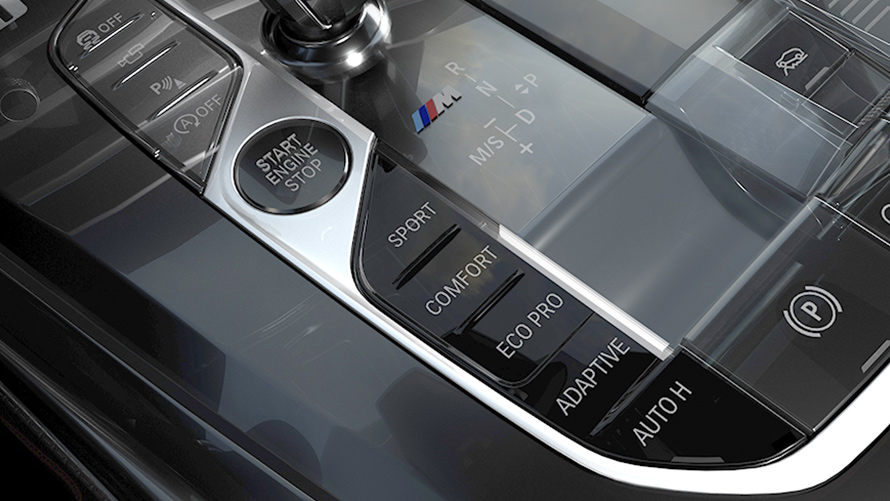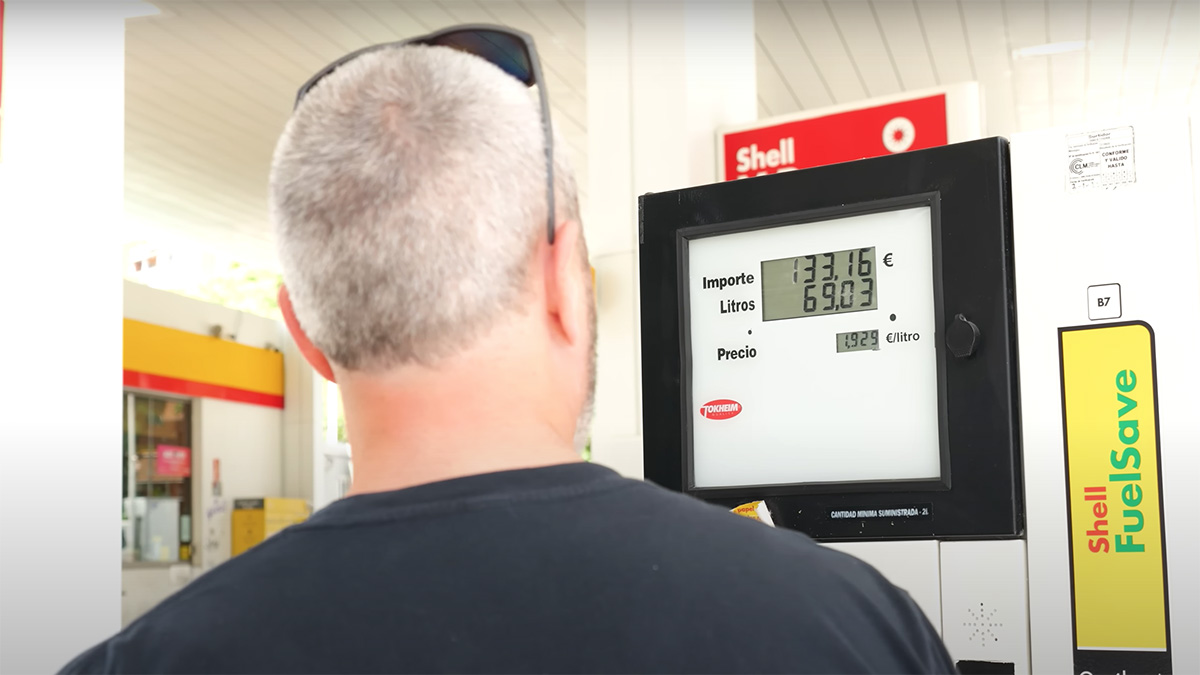Taking an older BMW 7 and driving it from London to Madrid on one tank is not a bad idea. Especially if you video the whole thing. Don’t miss this trip.
–
This article was preceded by a very specific situation. And a debate in our editorial office. Originally, we thought that we would keep the entire point of the story to the content itself and not reveal it in the title. In short, because it outclasses electromobility so much that it is probably no longer possible. And we didn’t want to build a headline on that declassification. But in the end, “the truth won” and the main thing is in the title above. As obvious as it is, read on and don’t miss the video. This will get you.
Economy run across Europe
The whole story is about a guy named Joe Achilles, who, among other things, enjoys making travel documentaries. Of course with cars and friends, because it’s all about cars and friends. What is interesting about this particular “flight through Europe” is how incredibly economical and practical it is can an older diesel BMW be. Sevens. That is, a small bussinesjet on four wheels. You expect comfort, you expect speed, you expect prestige. Economy? Only in second place. Yet here it is.
–
Because if you and a friend decide to try the economy run London – Madrid and you desperately want a BMW, what do you choose? Three. Suitable for two, completely. Or five, if with all the comfort. But you want to haul over five meters of steel, aluminum and loads of electrical junk just to feel like you’re riding in a limousine? Difficult. The two gave it a try anyway, taking the seven G11 730d and driving south from London. More precisely to Madrid. And they filmed the whole thing. The result will amaze you.
A large limousine with low consumption
They drove from London to Madrid on an 80 liter tank. 1600 kilometers. Have you shared it yet? No? So we will help you. After all, it’s very simple… …eight is half past sixteen, so we have it, we have it… Five out of a hundred. Is it even possible? Yippee. Long motorway journeys at a reasonable speed, ideal weather, economical turbodiesel. Ingenious. According to many of its owners, this car can drive up to 8 liters without any problems. On average. And a quiet hundred along the highway? Five is not a problem. It really isn’t.

i
–
However, of course it didn’t happen by itself. For example, if you look at the dashboard of the car in which the two friends were driving, which can be seen several times in the video, you will notice several things. The speed limit is set for the first time on the left of the speedometer, just after 60 miles per hour, which corresponds to roughly our hundred kilometers per hour. And this is also the generally recognized optimal speed for economical driving for most cars with an internal combustion engine. And as you can see, it also applies to large BMWs.
BMW finesse for fuel saving
Second, Joe activated the ECO PRO INDIVIDUAL mode, adjusting the function of many devices and systems on board to result in the lowest possible consumption. BMW states that up to 25% of fuel can be saved in this way. That’s not a small number. We do not know how realistic or optimistic this figure is, but here specifically the ECO PRO function obviously helped. Of course, at a speed limit of 100 km/h, when you step on the gas, it “resets” to the floor, and the BMW uses its maximum power and speed.

i
–
And now comes the most uninteresting part of our article. Or maybe also the funniest. Although how for whom. When we already had the calculator in our hands regarding the calculation of consumption, it did not allow us to they did not try to compare the theoretical range of an electric car from the same stable on the same route. In other words, you have a choice between the older diesel seven and the latest i7 model. Acquisition costs (however dramatically different) will not be taken into account for this purpose.
No good news for electro. Unfortunately
BMW claims a range of between 590 and 625 kilometers for its electric gem. These are excellent values in themselves. Recharging under ideal conditions from the Ionity 195kW fast charger then takes approximately 6 minutes/another 100km of driving. That too is great value, though still not comparable to anything “liquid in the tank”. But for the sake of the planet, we could manage a few tens of minutes. But we have a few small “buts”:
- BMW states on its own calculator that the range is reduced to 420 km if the route is on the motorway, the temperature outside is 20 degrees and the air conditioning is used. These were exactly the conditions of the test “flight over Europe”
- Ionita chargers are not nearly as widespread in France and Spain. For the sake of objectivity, we will therefore calculate with 50% Ionity, 50% classic fast charger 50 kW
At that moment, however, the basically comparable action “electro vs. “classic” can be noticeably changed in favor of a classic drive. You need 21 minutes to charge 100 km on a 50 kW charger. Psince we count on a range of 420 kilometers, we will count 4×21 minutes for simplicity. So 84 minutes every 420 kilometers times two. It equals 168 minutes. With Ionita, it’s 4×6 minutes, times two. It equals 48 minutes. A total of 216 minutes. No, 3 hours and 36 minutes. Is it too much or too little?
Score BMW diesel vs. BMW electric 1:0
A question of perspective. Or, what can you do in 3.5 hours? If you’re on your way to an appointment, such as a business meeting, you’ll most likely be long past it and on your way back when the electric i7 rolls into Madrid. And in addition: in order to be able to drive back immediately with the i7, you will have to recharge again, you have just used up those 4x400km. Wouldn’t you get tired of such a life? We probably do. And 400 km on the highway is nothing to get excited about. Especially if the “old” diesel predecessor can do 4x as much. And it fills up in 5 minutes. So where is the progress?
–


